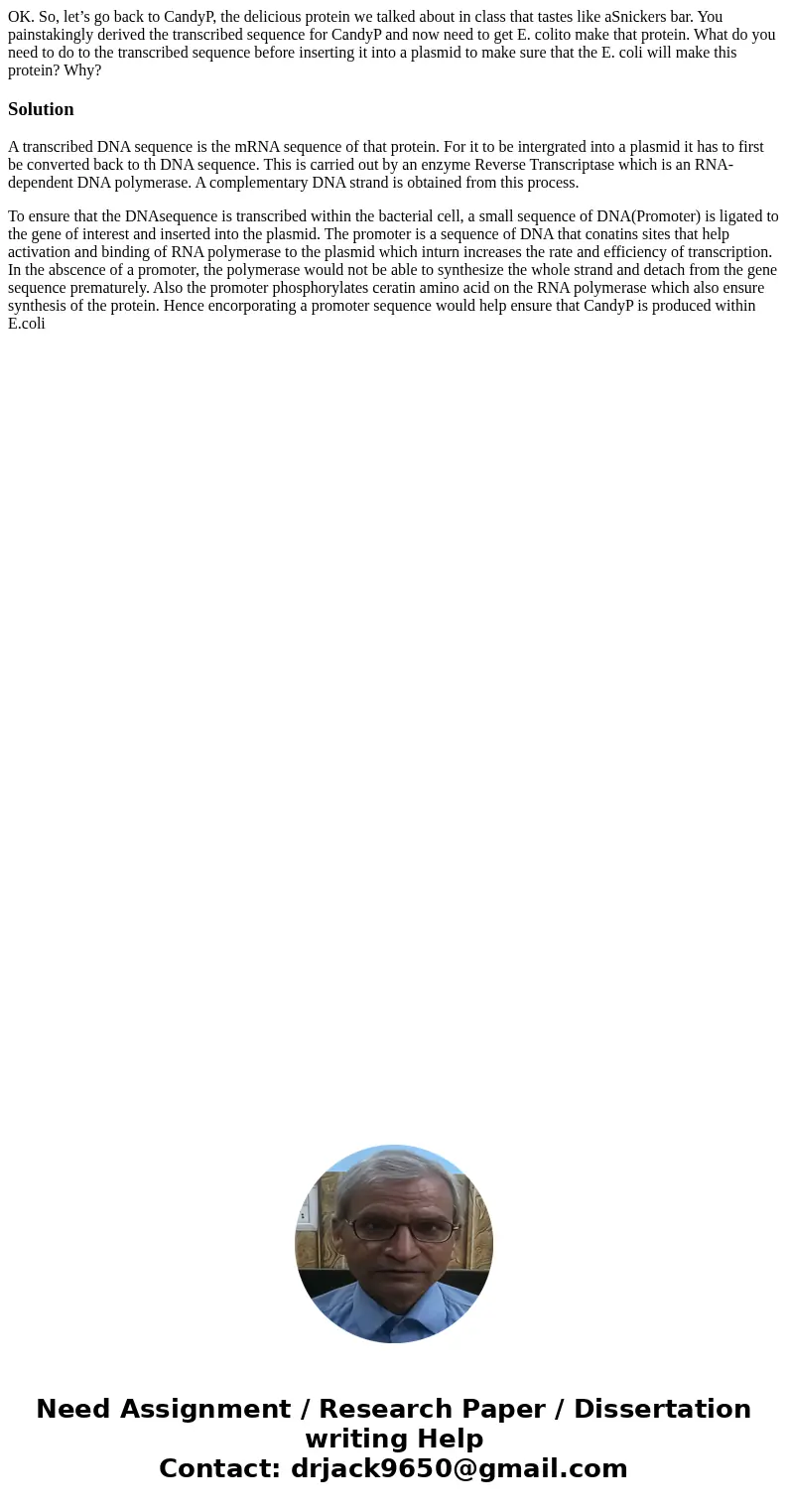OK So lets go back to CandyP the delicious protein we talked
OK. So, let’s go back to CandyP, the delicious protein we talked about in class that tastes like aSnickers bar. You painstakingly derived the transcribed sequence for CandyP and now need to get E. colito make that protein. What do you need to do to the transcribed sequence before inserting it into a plasmid to make sure that the E. coli will make this protein? Why?
Solution
A transcribed DNA sequence is the mRNA sequence of that protein. For it to be intergrated into a plasmid it has to first be converted back to th DNA sequence. This is carried out by an enzyme Reverse Transcriptase which is an RNA-dependent DNA polymerase. A complementary DNA strand is obtained from this process.
To ensure that the DNAsequence is transcribed within the bacterial cell, a small sequence of DNA(Promoter) is ligated to the gene of interest and inserted into the plasmid. The promoter is a sequence of DNA that conatins sites that help activation and binding of RNA polymerase to the plasmid which inturn increases the rate and efficiency of transcription. In the abscence of a promoter, the polymerase would not be able to synthesize the whole strand and detach from the gene sequence prematurely. Also the promoter phosphorylates ceratin amino acid on the RNA polymerase which also ensure synthesis of the protein. Hence encorporating a promoter sequence would help ensure that CandyP is produced within E.coli

 Homework Sourse
Homework Sourse